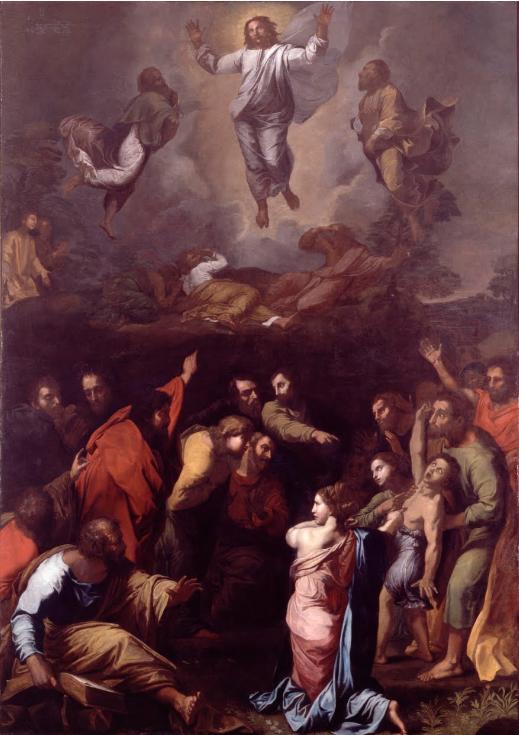
Transfiguration Sunday
♦
The Transfiguration Sunday
Minerva Generalao
27 February 2019
The story of the transfiguration of Jesus witnessed by his disciples is told in all synoptic gospels (Luke 9:38-36; Matt 17:1-8; Mark 9:2-8). All share the symbolism of cloud, light, voice, mountain and the figures of Moses and Elijah. The account is a challenge to teachers and preachers. What is it really all about? What is its genre? Is it a factual historical account? If it is, then its rich symbolism can be missed. But focusing on its symbolism can reduce the meaning. Among the many interpretations are the focus on an apocalyptic vision, a resurrection appearance or a historical account, as well as considering Jesus as a prophet.
Moses is considered the greatest prophet who led the Israelites out of slavery in Egypt, to the promised Holy Land. In what is called as the Mosaic pattern, he was sent and rejected again and again. Jesus was rejected too, even in his hometown. Both Moses (Ex 24:15-18) and Elijah (1 K 19: 8-13) had experiences of God’s presence in the holy mountain. It has been suggested that they represent the Law and the Prophets and are figures with apocalyptic significance in their mysterious passing.
Some interpreters also suggest the transfiguration to be an apocalyptic vision. Luke avoids the verb metamorpheo (change form; transfigure) used in Mark 9:2 and in Matt 17:2. He describes the change in Jesus as follows: The appearance of his face was altered, and his clothing became dazzlingly white (v. 29). The word “appearance” in this verse brings echoes of the glory of the Lord before Moses (Ex 24:17). “Dazzlingly white” hints of the vision of the chariot and the visions of God (Ezek 1:4-7). White garments are a symbol of joy and celebration. All of these elements: white clothes, cloud, and glory recall Dan 7:9-13 where the Son of Man receives a kingdom.
Some regard the transfiguration story having originated as an account of an appearance of the Risen Christ that was read back into the career of the earthly Jesus. Others consider the transfiguration as a historical account and take every element as literal fact. But biblical scholars say it is difficult to reconstruct the disciples’ experience because the Gospels draw heavily on the Torah’s descriptions of the Sinai encounter with God and on prophetic visions of the Son of Man. Perhaps Peter, James and John had a glimpse of Jesus’ divinity strong enough to strike fear into their hearts and make them drew on familiar religious language to describe their experience.
Lastly, if we consider the context of the story we see that all the three Synoptics place the transfiguration story shortly after Peter’s confession of faith that Jesus is the Messiah and Jesus’ first prediction of his passion and death. Thus, the transfiguration story helps the disciples (and the believers) to have a deeper understanding of Jesus’ identity and their call. The followers of Jesus, who believe him to be the messiah and son of God, must transform themselves to be worthy of the glory of God and must also be willing to suffer and take their cross.
I am amazed to find a wealth of meanings and interpretations on the transfiguration story. What stand out the most for me are the words referring to glory and God’s presence. My heart echoes the wish of believers to see the face of God and live. This is a reflection of Ex 33:20 where a comment in Etz Hayim says: “No human being can ever penetrate the ultimate mystery of God’s Being. Only a glimpse of the divine reality is possible. We can recognize God’s reality by seeing the difference God has made in people’s lives.”
For Reflection and Discussion: [1] What does the transfiguration story mean to you? [2] How can hear what God wants us to do? [3] Share examples where you have seen the difference God has made in people’s lives.
Bibliography: Etz Hayim, Torah and Commentary (New York, 2001); Harrington, Sacra Pagina: The Gospel of Matthew (Minnesota, 2007); Johnson, Sacra Pagina: The Gospel of Luke (Minnesota, 1991).

The Transfiguration – Raphael, 16th century
Source: Google Arts & Culture

This week’s teaching commentary was prepared by
Rev. Dr. Kristen Bennett Marble,
West Morris St. Free Methodist Church Senior Pastor, Indianapolis IN, 2013 Bat Kol alum
PLEASE NOTE: The weekly Parashah commentaries represent the research and creative thought of their authors, and are meant to stimulate deeper thinking about the meaning of the Scriptures. While they draw upon the study methods and sources employed by the ISPS-Ratisbonne, the views and conclusions expressed in these commentaries are solely those of their authors, and do not necessarily represent the views of ISPS-Ratisbonne. The commentaries, along with all materials published on the ISPS-Ratisbonne website, are copyrighted by the writers, and are made available for personal and group study, and local church purposes. Permission needed for other purposes. Questions, comments and feedback are always welcome.
Share this with your friends
Institute Saint Pierre de Sion – Ratisbonne – Christian Center for Jewish Studies
Congregation of the Religious of Our Lady of Sion
Contact us:
secretary@ratisbonne.org.il
26 Shmuel Ha-Naguid Street – Jerusalem
Subscribe to Newsletter

No responses yet